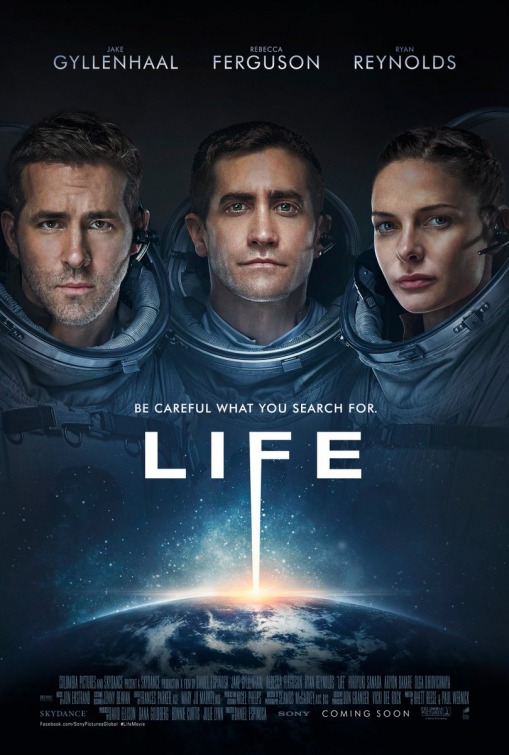There is a recent Hollywood trend of setting a cast of characters in outer space and have things go terribly wrong in a beautiful symphony of worst-case-scenarios set in the final frontier. This concept is barely original, dating back to films like “2001: A Space Odyssey”, and 2014 and 2013 blockbusters, “Interstellar” and “Gravity”.
Less flashy studios have taken their swing at the horror movie set in space trope. For instance, 2011’s “Apollo 18” is an example of an earlier attempt and is a film whose plot closely resembles that of “Life”. Both films explore what’s lurking around the corner of the unknown and look deep into the brazen eyes of American space imperialism, drawing out a sense of terror and unknowingness from their audience. “Life” is a suspenseful, disturbing and thrilling glimpse into what could happen if humans continue to assume that they are the only intelligent life in our solar system.
The film features a celebrity- heavy cast with actors such as Jake Gyllenhaal, Ryan Reynolds and Rebecca Ferguson. The dad- like panache of Ryan Reynold’s character, Rory, reinforces his role on the ship of the comical, hardened, adventurous astronaut.
[Warning: spoilers ahead.] If traits like that have been any indication of a character’s fate in past films, one can deduct what happens to the confident and protective Rory. The screen is shared with David (Jake Gyllenhaal), Miranda (Rebecca Ferguson), Ekaterina (Olga Dihovichnaya), Hugh (Ariyon Bakare) and Sho (Hiroyuki Sanada). A Hollywood blockbuster would of course not be complete without a predictable and chemistry- less romantic storyline. Gyllenhaal and Dihovichnaya’s characters share an unnatural attraction to each other that doesn’t do much to brew sympathy for either character in their dire situation. Character predictability aside, the interaction of all six crew members on the ship and the extraterrestrial they encounter continue an entertaining romp through the film’s plot line.
Perhaps the worst parts of this film are the women’s roles. Both women speak in sterile, detached, almost robotic tones and the two women cast as Ekaterina and Miranda look nearly identical to each other. They both talk in the same Siri-esque cadence, making it is confusing to the viewer to follow the lives of these astronauts in their dark spacecraft when two of them look and sound the same. This contrasts with characters like Ryan Reynolds’ almost cartoon-esque and caricatured personality traits and more-or-less reinforces Hollywood’s view of women as pretty, level-headed characters there to point a male- dominant cast to safety.
“Life”, above all else, accurately encapsulates the sense of wonder and discovery one could imagine the astronauts (and the world) reacting to such finding like life on Mars. In fact, you can’t tell the film is a horror movie until about the second half. It’s within the second half where one could get a sense of Daniel Espinosa flexing his directorial muscles. The shot choices, the camera angles and the framing of each and every shot contributes to a larger sense of horror and doom within the space station. Scenes in which characters die are shot in undesirable length with up-close visuals, so even if the viewer wanted to look away, they couldn’t. The gore in “Life” is congratulatory; it is terrifying without being over the top, a happy medium few horror directors get away with.
Another variable in horror movies that is rarely executed well is the subject of the monster, or in this case, the alien. While the alien is designed to look like a anthropomorphic starfish- octopus, it’s capabilities are far more sinister. The creature conveniently evades all the humanly ties to survival such as, heat, food, water, gravity and oxygen. This design makes for a near impossible victory for the naive humans.
Overall, “Life” is a rare, well-executed space horror movie to hit the theaters. Something surprising about the film was how the director chose to end the film. The ending is unexpected and ominous and punctuates “Life” as a must-see movie this spring. If anything, viewers should see this film for it’s ending, so they too can experience the sheer terror of a grim, poetic and utterly unhappy ending.
Author may be reached at
mmesa@su-spectator.com









